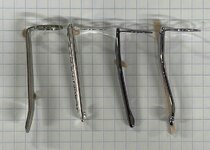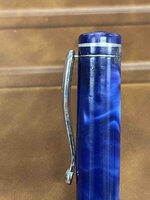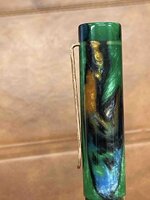Hello,
So far, I've been making relatively simple kitless pens, as you can see in the first photo attached. The entire barrel and cap being made from a single material (usually wood in my case), without any hardware such as accent rings or clips. This simple design has its artistic advantages, but as I'm always interested in improving my skills and trying new things, I wanted to try adding a clip and some different color "finals" (I think this is how you call them?) So, for example, the cap is made from wood in the middle and Ebonite or Acrylic beginning and end, with a clip fitted between the Synthetic end and the wood (second photo, NOT MY PEN!).
The problem is that I don't have a clue how to make such a thing and where to begin.
So, kitless pen makers: may I ask you how do you make those complicated pens?
Hopefully you will save me some trial and error. Thank you for any help!
So far, I've been making relatively simple kitless pens, as you can see in the first photo attached. The entire barrel and cap being made from a single material (usually wood in my case), without any hardware such as accent rings or clips. This simple design has its artistic advantages, but as I'm always interested in improving my skills and trying new things, I wanted to try adding a clip and some different color "finals" (I think this is how you call them?) So, for example, the cap is made from wood in the middle and Ebonite or Acrylic beginning and end, with a clip fitted between the Synthetic end and the wood (second photo, NOT MY PEN!).
The problem is that I don't have a clue how to make such a thing and where to begin.
So, kitless pen makers: may I ask you how do you make those complicated pens?
Hopefully you will save me some trial and error. Thank you for any help!








